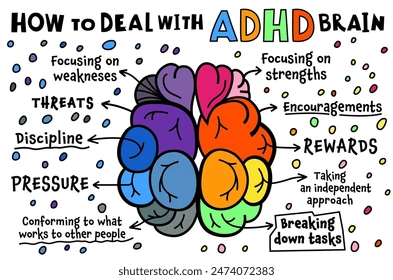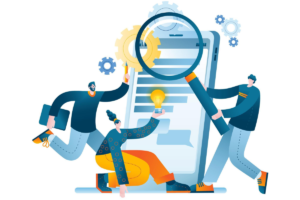Beyond the Pill: Understanding the Nuances of ADHD Medications in Real-Life Settings
When we think of ADHD medications, we often envision a quick fix—pills that promise to boost focus, reduce hyperactivity, and create a sense of calm. These medications, especially stimulants like Adderall and Ritalin, are frequently prescribed as the first line of treatment for Attention Deficit Hyperactivity Disorder (ADHD). However, the reality of managing ADHD with medication is far more nuanced than simply taking a pill. While these medications can be life-changing for many, they also come with a range of complexities that are often overlooked in broader discussions.
In this article, we explore the real-life impacts of ADHD medications, the subtleties that come with their use, and the importance of a holistic approach to treatment that goes beyond just the prescription bottle. We’ll take a closer look at how these medications function, the challenges of finding the right balance, and how individuals and families navigate the often bumpy road of ADHD management.
The Role of Medications in ADHD Treatment
ADHD is a neurodevelopmental disorder characterized by symptoms like difficulty maintaining focus, impulsivity, and hyperactivity. While the exact cause of ADHD remains elusive, it’s widely believed to be related to imbalances in certain neurotransmitters in the brain, particularly dopamine and norepinephrine. Medications that treat ADHD aim to address these imbalances.
The two main categories of ADHD medications are stimulants and non-stimulants. Stimulants, which include medications like methylphenidate (Ritalin, Concerta) and amphetamine salts (Adderall, Vyvanse), are the most widely prescribed and generally considered the most effective. They work by increasing the levels of dopamine and norepinephrine in the brain, which helps improve focus, impulse control, and executive function.
Non-stimulant medications, such as atomoxetine (Strattera) and guanfacine (Intuniv), offer alternatives for those who cannot tolerate stimulants or have co-occurring conditions like anxiety, which may be worsened by stimulant use. While they may not be as fast-acting as stimulants, non-stimulants can still be effective in managing ADHD symptoms, particularly in the long term.
While medications can significantly reduce symptoms and improve functioning, they are not a cure for ADHD. For many individuals, medication is just one part of a comprehensive treatment plan that might include therapy, lifestyle modifications, and educational support.
The Nuances of ADHD Medication in Real-Life Settings
1. The Trial-and-Error Process
For many people with ADHD, finding the right medication involves a lot of trial and error. While some individuals respond well to the first medication prescribed, others may find that it doesn’t work or causes unwanted side effects. The dosage also plays a significant role; the optimal dose can vary from person to person, and it may take time to figure out the right balance.
For example, a person may start on a low dose of a stimulant like Adderall but may experience symptoms like irritability, sleep disturbances, or loss of appetite. If these side effects are intolerable, the doctor might adjust the dose or switch medications entirely. It’s a process that requires patience, flexibility, and frequent communication with healthcare providers.
In addition, the effects of ADHD medications are not always immediate. Some medications, especially non-stimulants, can take weeks to reach their full effectiveness, and people with ADHD may feel discouraged during this period of adjustment.
2. The “Masking” Effect
While ADHD medications can improve focus and impulse control, they don’t necessarily address the underlying emotional and psychological struggles that often accompany the condition. Many individuals with ADHD report that, while the medication helps them stay on task, it can also dull their emotions or make them feel “robotic.”
For example, a child with ADHD who struggles with social interactions might be able to focus on a math test while medicated but still struggle with maintaining friendships or understanding social cues. Similarly, adults may find it easier to complete work tasks but feel emotionally distant or unable to manage the stress that comes with balancing their responsibilities.
This emotional “masking” effect can sometimes lead to a misunderstanding of ADHD as solely a cognitive disorder, when in reality it has significant emotional and social components. ADHD medications can improve certain behaviors, but they don’t necessarily teach emotional regulation, social skills, or coping strategies. As such, therapy or behavioral interventions are often necessary to complement the pharmacological treatment.
3. Long-Term Effects and Dependency Concerns
Another important consideration in real-life ADHD treatment is the long-term use of medication. Stimulants, in particular, have been the subject of concern due to their potential for misuse and dependency. While the majority of individuals with ADHD who are prescribed stimulants use them responsibly, there is a small subset who may develop a dependence, especially if the medication is taken in higher doses or inappropriately.
This is why it’s essential for people with ADHD and their healthcare providers to regularly assess the medication’s effectiveness and potential side effects. Monitoring is particularly important for teenagers and young adults, who may be more prone to experimentation or misuse. Regular follow-up appointments can help ensure that the medication is being used appropriately and that any concerns are addressed promptly.
Additionally, there are concerns about the long-term effects of stimulant use on brain development. While research has not conclusively linked ADHD medication to long-term harm, there is ongoing study into how stimulants impact the brain, particularly in younger populations. Parents and individuals considering ADHD medications should be informed about these potential risks and engage in open conversations with their doctors about the best course of action.
4. The Social and Academic Impact
For children and teenagers with ADHD, medication can have a profound impact on their social and academic lives. On the one hand, medication can improve classroom behavior, leading to better academic performance and a reduced likelihood of disciplinary issues. Students who are able to stay on task and focus on their schoolwork may perform better on tests and assignments, improving their overall academic experience.
On the other hand, the social impact of ADHD medication can be complex. Children who were previously disruptive in class may now behave in a more subdued manner, but they may still struggle with making friends or engaging in social activities. Medication can sometimes make kids “appear” less animated or expressive, and peers may not understand the subtle changes in behavior, potentially leading to feelings of isolation or frustration.
For adults, the impact of ADHD medication on their professional lives can be equally mixed. While some people find that medication helps them manage work-related tasks and meet deadlines more effectively, others may find that the medication affects their creativity or ability to think outside the box. People with ADHD often have a heightened sense of creativity and spontaneity, traits that can be dulled by medication. This “trade-off” between structure and creativity is an ongoing challenge in many real-life settings.
The Importance of a Holistic Approach to ADHD Treatment
It’s clear that medication alone is not a one-size-fits-all solution to managing ADHD. For a comprehensive approach to treatment, ADHD medication should be combined with other therapeutic interventions. Behavioral therapy, Cognitive Behavioral Therapy (CBT), coaching, and even dietary or lifestyle changes can all play significant roles in helping individuals with ADHD manage their symptoms effectively.
Furthermore, ADHD medication should always be prescribed and monitored by a healthcare provider who understands the complexities of the disorder. Parents, teachers, and adults with ADHD should also be well-informed and involved in the treatment process, advocating for adjustments as needed and seeking out additional support when necessary.
ADHD is a lifelong condition that requires ongoing management, and medications are just one tool in a much broader toolbox. By focusing on the whole person—addressing cognitive, emotional, and social factors—individuals can achieve the best possible outcomes in managing ADHD.
Conclusion
ADHD medications offer significant benefits to those who live with the disorder, helping to reduce symptoms and improve focus, impulse control, and overall functioning. However, the real-life experience of managing ADHD with medication is far more complex than simply taking a pill. The process of finding the right medication, the potential for emotional and cognitive side effects, the concerns about long-term use, and the need for a holistic approach all contribute to the nuance of ADHD treatment.
In the end, while medication plays a critical role, it is only one piece of the puzzle. A comprehensive treatment plan that includes therapy, lifestyle changes, and ongoing support is essential for helping individuals with ADHD thrive in real-life settings. By approaching ADHD treatment with a balanced, well-informed perspective, we can move beyond the pill and towards a more effective, sustainable management of the disorder.














Post Comment